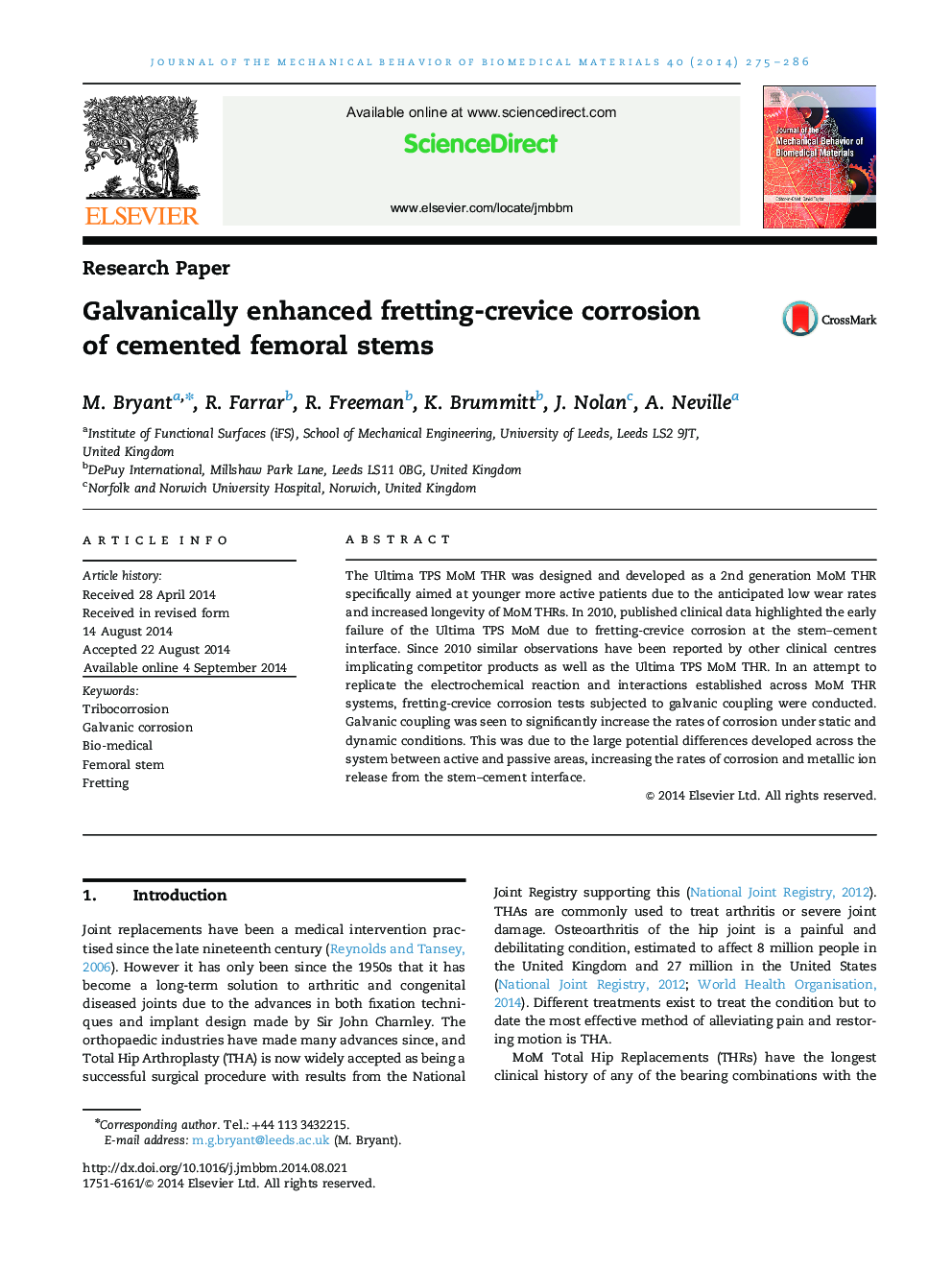| Article ID | Journal | Published Year | Pages | File Type |
|---|---|---|---|---|
| 7208709 | Journal of the Mechanical Behavior of Biomedical Materials | 2014 | 12 Pages |
Abstract
The Ultima TPS MoM THR was designed and developed as a 2nd generation MoM THR specifically aimed at younger more active patients due to the anticipated low wear rates and increased longevity of MoM THRs. In 2010, published clinical data highlighted the early failure of the Ultima TPS MoM due to fretting-crevice corrosion at the stem-cement interface. Since 2010 similar observations have been reported by other clinical centres implicating competitor products as well as the Ultima TPS MoM THR. In an attempt to replicate the electrochemical reaction and interactions established across MoM THR systems, fretting-crevice corrosion tests subjected to galvanic coupling were conducted. Galvanic coupling was seen to significantly increase the rates of corrosion under static and dynamic conditions. This was due to the large potential differences developed across the system between active and passive areas, increasing the rates of corrosion and metallic ion release from the stem-cement interface.
Related Topics
Physical Sciences and Engineering
Engineering
Biomedical Engineering
Authors
M. Bryant, R. Farrar, R. Freeman, K. Brummitt, J. Nolan, A. Neville,
